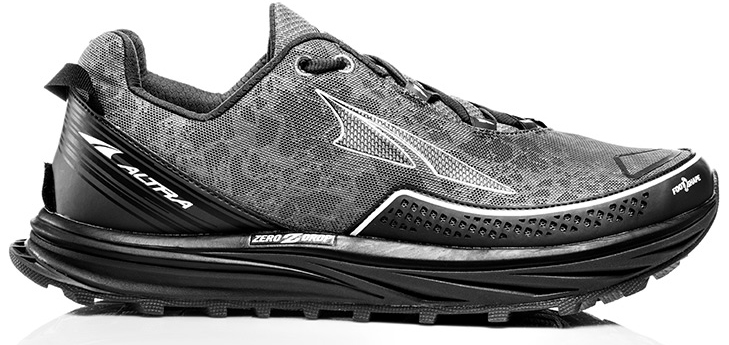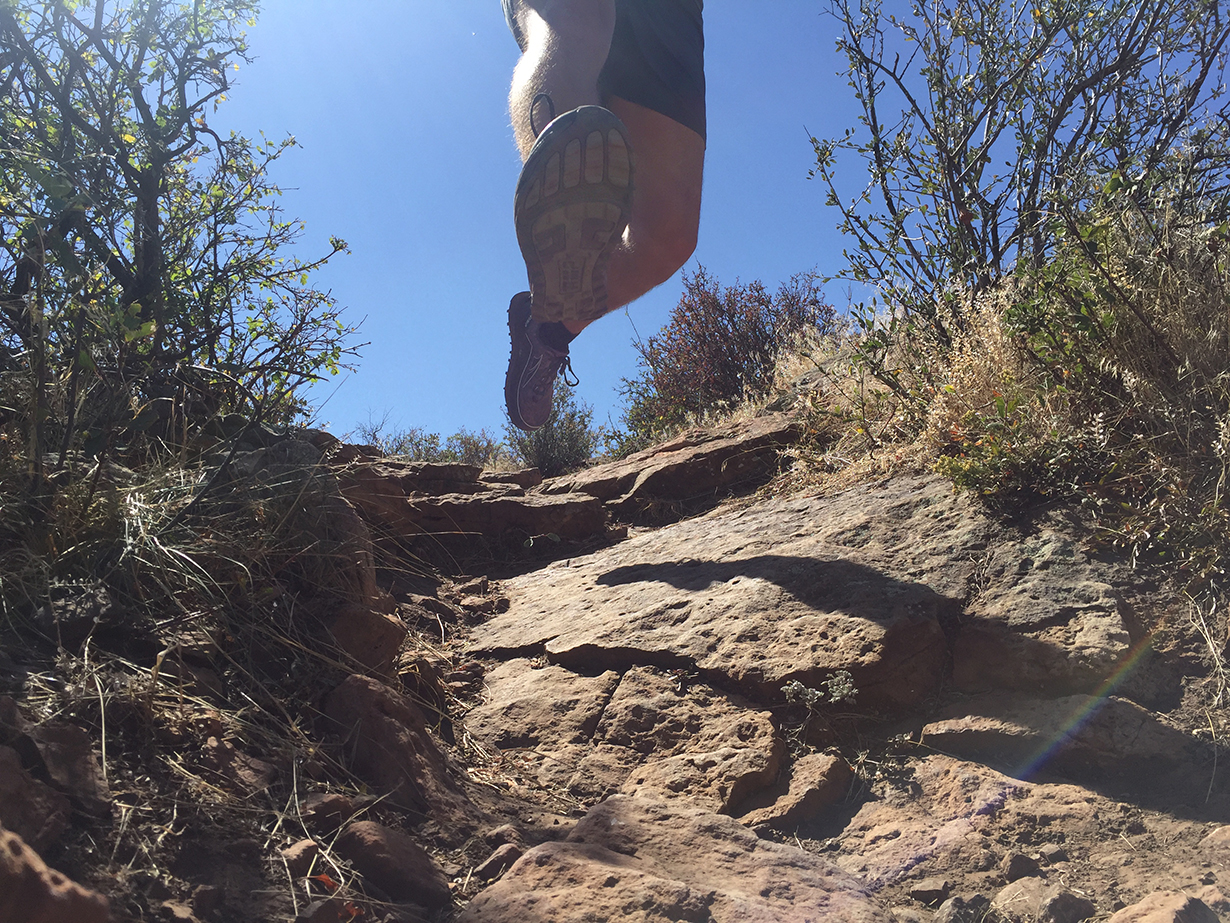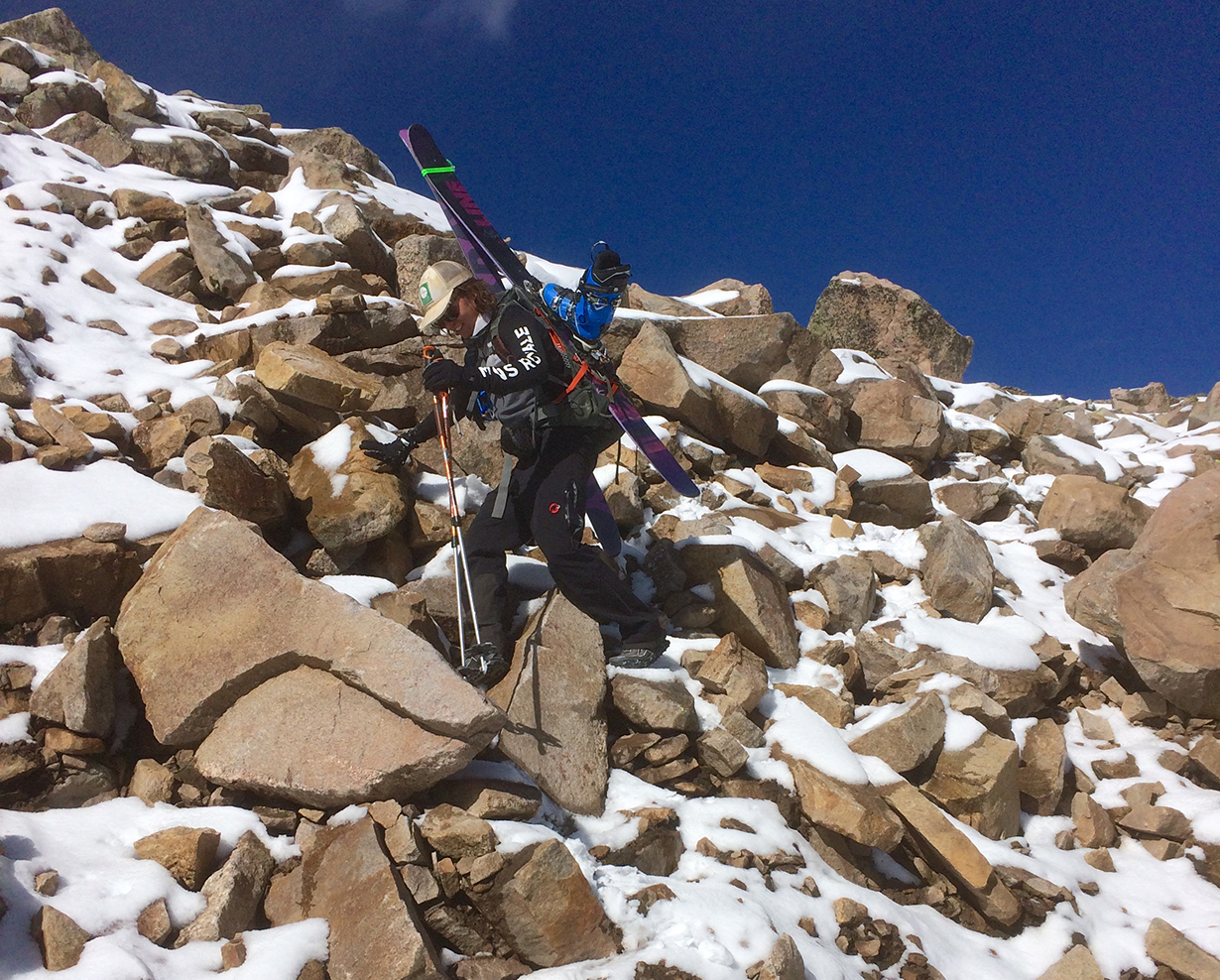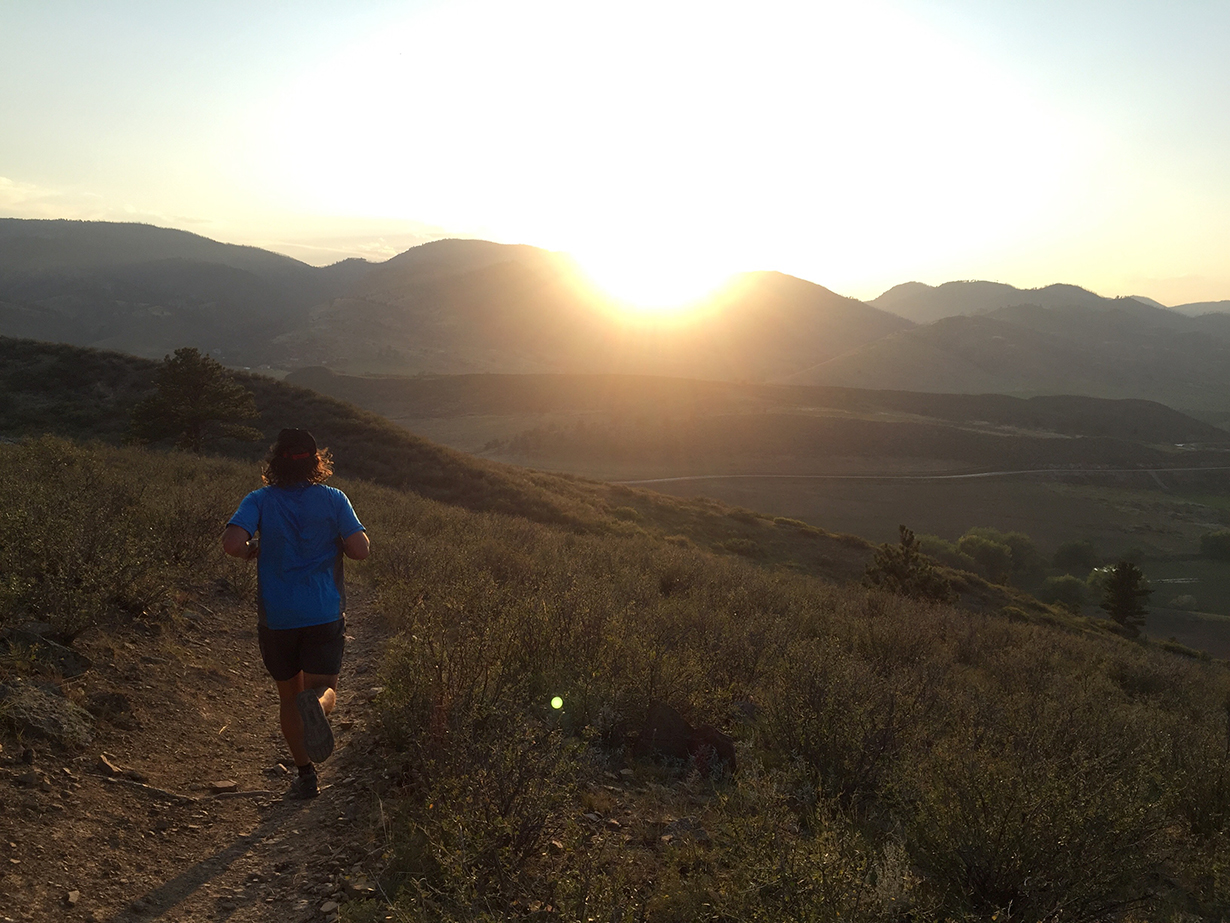
Altra Timp
Drop: 0 mm
Stated Features:
- Cushioning: High
- Stack Height: 29 mm
- Platform: Fully Cushioned Zero Drop™ platform and FootShape™ toe box
- Last: PFS2-M
- Midsole: Ultralight EVA with A-Bound™
- Outsole: DuraTread™ Rubber with TrailClaw™
- Insole: 6 mm Contour Footbed
- Upper: 360° Reflective Upper
- GaiterTrap™ Technology
MSRP: $130
Size Tested: 10
Stated Weight: 315 g / 11.1 oz
Blister’s Measured Weight per Shoe:
- Shoes + Laces: 315 & 317 g
- Insoles: 20 & 20 g
- Total: 335 & 337 g
Test Locations: Fort Collins, Crested Butte, & Rocky Mountain National Park, CO.
Test Duration: ~250 miles
Reviewer: 5’8”, 155 lbs.
Intro
The Timp is the newest addition to Altra’s line of trail running shoes, and it is essentially a mix of a few of their trail shoes. The Timp features:
- The same last as the Altra Superior 3.0
- The same Zero Drop platform and FootShape toebox of all Altra shoes
- A 29 mm stack height, which puts it between the Lone Peak 3.5 (25 mm), and the Olympus 2.5 (36 mm), and makes it the second most-cushioned shoe in Altra’s trail line.
Altra is positioning the Timp as a versatile trail shoe that is “ready to tackle any distance or trail condition,” and says that its lower-volume last reduces lateral movement for a more precise fit.
All of this makes the Timp an interesting shoe, and after my first 100 miles, I can weigh in on its initial performance on the trail, offer comparisons to some other trail shoes — and explain why it isn’t as straightforward of a shoe as one might think.
Fit
The men’s Timp is based on Altra’s PFS2-M last (the women’s version uses the PFS-W last), which is the same as the Superior 3.0. So right off the bat, if you know you like the fit of the Superior 3.0, you’re probably going to like the fit of the Timp.
But if you haven’t tried the Superior 3.0, I can offer some fit notes from my experience. Though Altra emphasizes the Timp’s narrower, performance fit, it certainly doesn’t feel like a narrow shoe. This is mostly due to Altra’s FootShape toebox, which looks a bit like a duck foot, with increased width at the end to allow for plenty of toe splay.
While the front half of the Timp is pretty wide, the midfoot and ankle are fairly standard, and felt just a little bit more voluminous than the Hoka Speedgoat 2. I had no problem with heel or ankle hold in the Timp, though I did have to use the extra upper lace eyelet to crank down on my heel, something that I haven’t needed to do with other shoes.

Unlike the Speedgoat 2 and Salomon Sense Mantra, I’ve never had any pain around my wide forefoot while using the Timp, which I’d attribute to the wide FootShape toebox.
Overall, I was very happy with the fit of the Timp (which I wore in my usual size 10), and it paired well with my wide forefoot and low instep. That said, there were some situations where the fit of the Timp wasn’t ideal for me, which I’ll discuss later on.
Construction and Features
The Timp has a few features that make it stand out among other trail shoes.
First, the upper is an interesting combination of a soft, thin mesh on the inside (that feels similar to the upper of the Speedgoat 2), and then a stiffer, very thin tricot mesh on the outside. The Timp’s upper also features a reflective camouflage pattern, which is a bit odd for a trail shoe, but in my opinion, looks pretty sweet when lit up.
In addition to the mesh upper, the Timp has TPU overlays around most of the perimeter of the shoe, and these have held up well so far. The toe bumper of the Timp is pretty minimal, and is even narrower than the bumper on the Speedgoat 2. However, I haven’t had any real issues with it, which I’d partially attribute to the Timp’s more upturned toebox, which helps avoid dead-on impacts with rocks — unlike shoes with less “toe rocker.”

The Timp also features Altra’s “GaiterTrap” technology, which is essentially a velcro patch on the heel and a small D-ring at the toe. I haven’t used gaiters with the Timp, but if you do, this is a plus.
The asymmetrical laces on the Timp provided me with a secure fit, and created an even pressure over my instep and ankle while still allowing my toes to splay and take advantage of the Footshape toebox.
The midsole of the Timp is one of its defining features. At 29 mm thick, it’s only slightly thicker than the 27.5 mm midsole of the Speedgoat 2, but these shoes don’t feel all that similar on the trail. I’ll go over this in more detail further down, but the Timp’s midsole offers noticeably less rebound and support than the Speedgoat 2’s, and is a bit softer overall.
Zero Drop
Like all Altra shoes, the Timp has no drop from the heel to the toe of the shoe. I think this will be one of the most important factors for people to consider when considering the Timp.
I’m a fan of shoes with low heel-to-toe drops, so unsurprisingly, I got along well with the Timp’s platform. However, if you are coming from shoes with a more traditional 10-12 mm drop, and are used to a heel-first foot strike, I’d highly recommend trying some shoes with lower drops before fully committing to a zero-drop shoe.
I did not find the transition to the Timp from the 4.5mm-drop Speedgoat 2 to be a difficult adjustment, especially since I had already adopted a running style that catered to low-drop shoes. That said, we would definitely recommend taking a look at Altra’s transition plan if you’re new to zero-drop shoes.
Making the recommended changes to my running form and training routine definitely helped ease the transition period, and as someone who used to work in a shop that sold zero-drop shoes (and consequently dealt with many unhappy, sore / injured customers), I am very familiar with the potential injuries associated with people who switch from traditional to zero-drop shoes without adjusting their running form or mileage.
Weight
Weighing in at ~336 g / ~11.9 oz per shoe in a size 10, the Timp is a bit heavier than the Speedgoat 2 (297 g in a size 10). However, with a 29 mm midsole, this weight isn’t all that surprising, and I actually thought that the Timp felt fairly light on my feet. However, this is obviously not some minimal race flat, and the weight of the Timp might be an issue for some people.
Breathability
As I’ve said before, I don’t worry too much about a shoe’s breathability — my feet are going to sweat either way, and as long as I don’t get blisters, I’m happy. The Timp more than satisfied me in this regard, and seemed to breathe and dry a bit faster than the Speedgoat 2, and definitely more so than the Sense Mantra.
Traction
The Timp utilizes Altra’s DuraTread rubber, and features 4 mm lugs. Overall, I’ve been happy with the Timp’s grip, and found it performed similarly to the Vibram MegaGrip outsole on the Speedgoat 2.
The Timp offers great grip on packed dirt / sand, dry rock, shallow sand, and shallow mud.
Like the Speedgoat 2, I’ve found the Timp somewhat lacking in grip on kitty-litter-sized gravel, very deep mud / sand, and wet or sandy rocks. It’s not terrible in these conditions, but certainly offers less traction than on drier, and more hard-packed trails. The Speedgoat 2 grips a bit better the deeper and looser the conditions get, which I’d attribute to its deeper lugs and more aggressive tread pattern.
I’d say the surface that at all concerned me with the Timp was wet rocks. I used the Timp as an approach shoe for a couple summer / fall skiing trips, and when the approach involved boulder hopping on wet granite, I was wishing for something else.

Running
As I hinted in the Intro, the Timp hasn’t performed exactly as I’d imagined when looking at its features and specs. This isn’t inherently bad, I just found that the Timp performed differently than expected.

Despite its 29 mm midsole, the Timp does not feel like a plush shoe. The ride of the Timp is much less “bouncy” or responsive compared to the Speedgoat 2. So, if you’re hoping for an ultra-plush ride, I’d check out some other options (the Speedgoat 2 being worth a look). However, this is definitely an area of personal preference, and if you want a decent amount of trail feel in your 29 mm shoe, then the Timp might be more appealing.
The lack of rebound in the sole of the Timp (and corresponding increased trail feel) make this shoe feel more precise than you might think when simply looking at the size of its midsole. While the Speedgoat 2 tends to mute any rocks or roots on the trail, the Timp does not. For most of my runs (which consist of about half sand / half rocks) this has worked fine, and, when combined with the wide platform and secure fit of the Timp, has made it a pretty confidence-inspiring shoe on inconsistent terrain.

However, since its midsole doesn’t offer a whole lot in the form of support, and the Timp lacks a rock plate, I have experienced some foot fatigue / pain after longer, rocky runs. So, if your favorite trails consist of rocky, unforgiving terrain, the Timp might not be the best option. However, if you’re not always running on rocks — or you’re used to / prefer less cushioned shoes and want to try a shoe with a bit more cushioning while maintaining good trail feel, then the Timp might be a good option.
In terms of stability, the Timp has performed better than its wide shape and tall stack height would suggest. The wide sole, reliable grip of the rubber, and solid fit all combine to make the Timp fairly stable and reliable in most situations. Unlike the Speedgoat 2, I never found the Timp’s thick midsole to feel “tippy,” but instead, its wide platform makes the shoe feel like it has a large sweet spot where my foot felt stable, and I’ve rolled my ankle fewer times in the Timp than the Speedgoat 2.
While the Timp’s wide platform and softer midsole improve its overall stability and trail feel, it isn’t the best shoe for extensive edging. While scrambling on long, rocky approaches to and from ski lines, I would’ve preferred a narrower, stiffer shoe (like, say, an actual approach shoe — go figure). However, for general running where you’re momentarily weighting the shoe’s edges, rather than standing on them for extended periods of time, I’ve found the edging capabilities of the Timp to be satisfactory.
Durability
After a little over 100 miles, the Timp shows few noticeable signs of wear. I’ve had no tears in the upper, and the outsole looks new apart from some minor wear on the outside lugs. As with the Speedgoat 2, the sides of the midsole are a bit scuffed up, but not to the point where it’s affecting the shoe’s feel or performance.

It’s definitely worth noting that, out of the box, the Timp’s midsole felt a bit firmer / more supportive than it does now. After about 20 miles, the Timp seemed to fully pack out, and it hasn’t changed much since. So if you’re trying the shoe on in a shop, keep in mind that it will pack out a bit.
I’ll be updating this review after I get more miles on the Timp, and will include an update on the Timp’s longer-term durability.
Bottom Line
Despite what its specs might suggest, the Altra Timp isn’t some ultra-plush shoe designed to steamroll over every rock and root on the trail. Instead, it’s a shoe with a decent amount of cushion that still offers good trail feel.
Given this, I wouldn’t recommend it to those hoping for maximum rebound and plush support, or those who often run on predominantly rocky trails. But if you want a cushioned shoe that doesn’t mute out everything on the trail, and you get along well with Altra’s Zero Drop platform and wider FootShape toebox, the Timp is worth a look.
Stay Tuned…
After I get more miles in the Timp, I will report back on how the shoe is holding up, how it deals with an even broader range of conditions, and will also offer more comparisons.
Long-Term Update
After around 250 miles, the Timp is still holding up well. Most of the mileage I’ve put on the Timp has been on sand and rocks, with a bit of time on pavement on the way to the trails.
The midsole feels pretty much how it did after the initial ~20 mile break-in period. It hasn’t softened up significantly more, and still feels less plush and responsive than the Hoka One One Speedgoat 2.
The Timp’s outsole is holding up quite well. Some of the outer lugs on the Timp’s sole are missing small chunks, which I assume is from edging / scraping the outside of the shoe. All the interior lugs look just slightly more worn down than when I got the shoe.
The midsole has some minimal scuffing, but nothing that has affected the shoe’s performance. The Timp’s upper shows zero signs of wear, which is impressive given the mileage and terrain I’ve been using it on (lots of rocks). The Timp’s upper is holding up better than that on the Speedgoat 2, though I haven’t had any serious blowouts on either shoe.
In terms of general performance, my opinions haven’t changed since my initial review. It is still an interesting shoe in that it has a pretty high stack height of 29 mm, but still offers plenty of trail feel. Personally, as someone who spends most of my time running on rocky trails, I’ve come to prefer the Speedgoat 2 over the Timp for the trails around me. The Timp does great for shorter, rocky runs, but if I’m running more than around 6 or 7 miles, I’ll take the plusher ride of the Speedgoat 2 as I’ve noticed some issues with foot fatigue while doing longer runs in the Timp on rocky trails. And it’s worth noting again that, in general, I personally prefer more maximalist-style shoes.
But again, if you’re curious about a more heavily cushioned shoe but don’t want to lose all the trail feel of your less cushioned shoes, then the Timp could be a great option. I still really like the Timp’s fit, and think it offers a great combination of room in the mid and forefoot and a secure heel pocket and instep area (at least for my average-volume, low-instep foot). The fit, zero-drop platform, and moderate cushioning of the Timp still make it one of my top choices for shorter trail runs on a variety of terrain, or longer runs on more forgiving trails (e.g. packed dirt).
